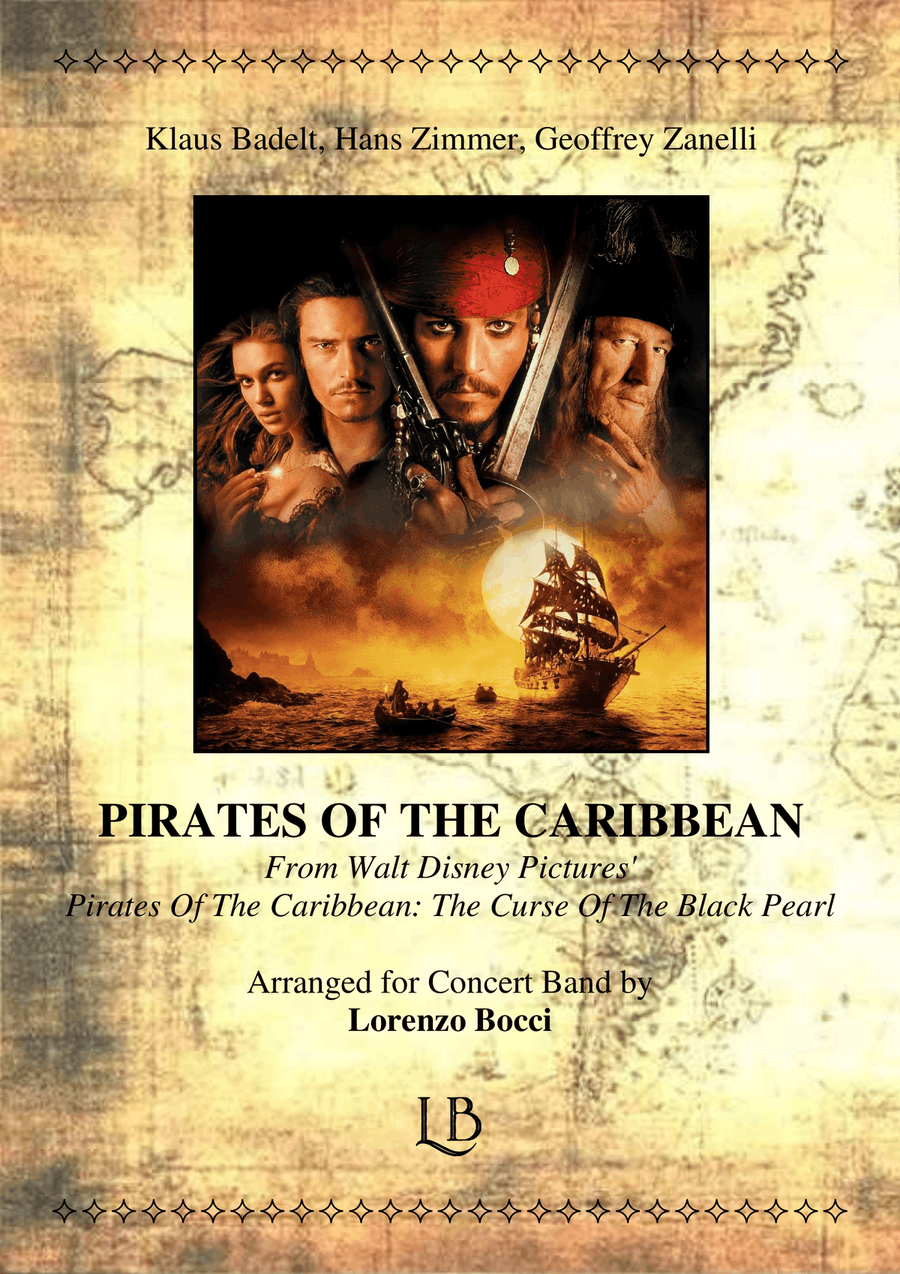Concert Band - Level 4 - Digital Download SKU: A0.1515047 Composed by G. Zanelli, Hans Zimmer, and K. Badelt. Arranged by Lorenzo Bocci. Film/TV. 263 pages. Lorenzo Bocci #1089520. Published by Lorenzo Bocci (A0.1515047). PIRATES OF THE CARIBBEAN - From Walt Disney Pictures' Pirates Of The Caribbean: The Curse Of The Black Pearlfor Concert Band - Grade 4 - Digital Download - More Film MusicComposed by Klaus Badelt, Hans Zimmer, Geoffrey Zanelli. Arranged by Lorenzo Bocci. Film. Concert Band - Blasorchester - Harmonie. Score and parts. Duration 11'45''. Published by Lorenzo Bocci.Instrumentation:Full Score, Flute 1, 2, Oboe, Bassoon, Eb Clarinet, Bb Clarinet 1, 2, 3, Bb Bass Clarinet, Eb Alto Saxophone 1, 2, Bb Tenor Saxophone, Eb Baritone Saxophone, Bb Trumpet 1, 2, 3, F Horn 1, 2, 3, 4, Trombone 1, 2, Bass Trombone, Euphonium 1, 2, Bass, Double Bass, Timpani, Percussion 1 (Cymbals, Bass Drum), Percussion 2 (Sus. Cymb., Triangle) Percussion 3 (Snare Drum, Open Charleston), Percussion 4 (Tubolar Bells, Tom Tom)Additional Parts:Bb Soprano Saxophone, Eb Horn 1, 2, 3, 4, Bb Trombone 1, 2 T.C., B.C., Bb Bass Trombone T.C., B.C., Bb Euphonium 1, 2 T.C., B.C., Bb Bass T.C., B.C., Eb Bass T.C., B.C., Cello (does not appear on score)Pirates of the Caribbean: The Curse of the Black Pearl?is a 2003 American fantasy swashbuckler film directed by Gore Verbinski. Produced by Jerry Bruckheimer and distributed by Walt Disney Pictures. The film stars Johnny Depp, Geoffrey Rush, Orlando Bloom, and Keira Knightley. The film was a massive box-office success, it received generally positive reviews from critics, with particular praise going to the performance of Depp, who won a Screen Actors Guild Award. He was also nominated for awards at the Academy Awards, the BAFTAs, and the Golden Globes. The film was followed by four sequels: Dead Man's Chest (2006), At World's End (2007), On Stranger Tides (2011), and Dead Men Tell No Tales (2017).Subscribe to my YouTube Channel to stay updated on new releases.
